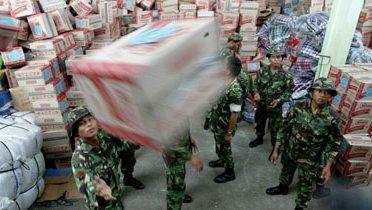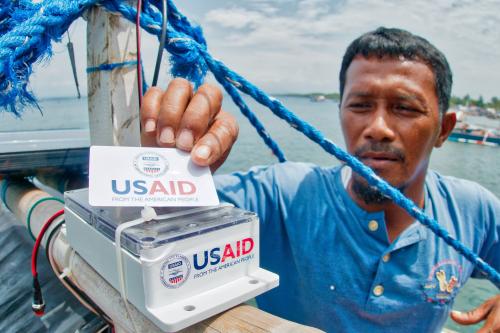Executive Summary
Flows of official development assistance (ODA) to recipient countries have been highly volatile and this reduces their value. At the macro level, empirical evidence suggests that volatile ODA can negatively impact growth through several channels. At the micro level, volatility can affect fiscal planning and the level and composition of investment. This working paper develops a simple financial metric that policy makers can use to estimate (and reduce) the cost of aid volatility. Unlike other estimates, our measure does not depend on parameter estimates from cross-country regressions, nor on country-specific model simulations.
We treat aid flows as the uncertain return on an unobserved asset of “global goodwill” held by developing countries. We then calculate the certainty equivalent value of the volatile aid flows as well as an associated dead weight loss, using a capital asset pricing model. Our measure of the deadweight loss per dollar provided in aid permits a comparison of costs across donors and over time. We find that the costs of volatility rose steadily until 2002, and have since fallen.
Aid volatility is similar for low and middle income countries; weak states and strong states; aid dependent and low-aid countries; and across regions. Aid volatility differs substantially, however, by donor. We infer that donor policies contribute to volatility and that they should make reducing volatility a strong priority.
Key Findings
- ODA is much more volatile than major macro variables: five times as volatile as GDP and three times as volatile as exports for the average recipient. ODA typically magnifies real business cycles in recipient countries.
- The aid system generates massive negative income shocks to some developing countries (on rare occasions). These large negative shocks account for the high cost of volatility. The impact of aid shocks has been as large and as frequent as income shocks faced by developed countries during the two World Wars, the Great Depression and the Spanish Civil War.
- The deadweight loss associated with aid volatility is between 15 and 20 percent of the total value of aid in recent years. At current aid levels, this loss is about $16 billion.
- From the average recipient’s perspective, the deadweight loss is about 1.9 percent of GDP.
- Volatility costs between $0.07 and $0.28 per dollar of aid, depending on the donor.




